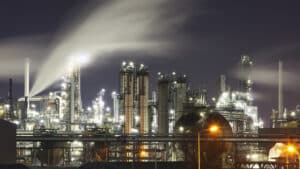The industrial sector accounts for nearly 30% of global energy consumption, with thermal processes that, in many cases, waste a significant amount of heat. In a context where energy efficiency is no longer optional but essential, rethinking its use becomes a strategic priority.
Rising energy costs, regulatory pressure on emissions, and social demand for sustainable practices are forcing companies to seek technological solutions. The goal is not only to optimize processes but also to reduce environmental impact.
Among these solutions, heat transfer and recovery emerge as some of the most effective and least visible, yet with enormous transformative potential.
What is heat transfer and why it matters more than ever
It is the process through which thermal energy moves from one body or system to another. It occurs naturally, but when understood, controlled, and optimized, it becomes a powerful tool to improve the performance of any industrial process.
There are three main mechanisms: conduction (through solid materials), convection (through fluid movement), and radiation (via electromagnetic waves). In practice, these phenomena constantly interact within boilers, heat exchangers, furnaces, or reactors.
Its current relevance goes beyond its physical function. Its conscious and strategic application enables the recovery of thermal energy that would otherwise be lost as hot gases, steam, or residual liquids. This reuse not only reduces total energy consumption but also lowers greenhouse gas emissions, contributing to global decarbonization goals.
Energy efficiency: beyond savings, a change of paradigm
Improving energy efficiency is no longer just about lowering the electricity bill. Today, it means redesigning processes, leveraging every residual heat flow, and applying sustainability criteria from the ground up.
Thermal losses in industrial processes can reach double-digit percentages in many sectors. For instance, in the chemical or metallurgical industries, exhaust gases often exceed 300°C, wasting a considerable amount of energy.
With well-designed systems, this heat can be reused to preheat raw materials, generate steam, or even power other production lines.
These recovery systems not only offer an attractive return on investment but also increase operational stability. They reduce reliance on external sources, ease the burden on cooling systems, and allow for greater control over the energy balance.
Thermal engineering as a strategic tool
Implementing effective heat transfer solutions is not a one-size-fits-all task. It requires a rigorous technical approach tailored to each industry’s specific conditions.
From choosing materials with high thermal conductivity to integrating modular systems in complex industrial environments, thermal engineering is making firm strides toward customization. It’s not just about installing equipment but designing solutions that meet specific production cycles, variable thermal loads, and real spatial constraints.
Furthermore, the development of advanced sensors and automation technologies has enabled many systems to be monitored in real time. This makes it possible to optimize their performance based on current energy demand. This connection between thermal efficiency and digital control paves the way for smarter, more responsive, and sustainable factories.
Use cases: heat transfer in action
The application of efficient thermal solutions is not limited to a single sector.
In the food industry. Heat recovery systems allow residual energy from processes like pasteurization or cooking to be reused in other stages, such as washing or drying.
In the steel industry. High temperatures present a huge opportunity for heat recovery from combustion gases.
In the paper industry. The evaporation of water during drying generates thermal flows that can be reused with the right systems.
Across all industries, these cases share a common goal: achieving a balance between performance, consumption, and sustainability.
The role of specialized engineering in this transition
While many companies recognize the importance of thermal efficiency, not all have the technical knowledge to implement it effectively. This is where the role of specialized engineering firms becomes essential.
A representative example is Aitesa, a company with a solid track record in designing and installing heat transfer and recovery solutions tailored to demanding industrial environments. Its focus on custom engineering enables the optimization of thermal systems in all types of facilities, with performance, safety, and energy efficiency in mind.
Beyond their technical work, companies like this act as strategic partners, guiding industries through their energy modernization journey, aligning business objectives with environmental challenges.
Looking ahead: emerging technologies and challenges
Heat transfer will remain a key area in the transition toward a more sustainable energy model. However, it must also adapt to new technological and regulatory conditions.
In the coming years, we will see a greater use of artificial intelligence to optimize thermal flows in complex plants in real time. There will also be increasing integration with renewable energy sources, such as solar thermal. Hybrid solutions that combine residual heat with thermal storage will also gain importance.
Nevertheless, challenges remain: from technology standardization to cost reduction in less energy-intensive sectors. Furthermore, large-scale adoption in developing countries will require flexible, scalable, and robust models.
In a world increasingly aware of the environmental impact of industrial activity, this solution represents a silent yet decisive revolution. It may not be as visible as other emerging technologies, but its ability to transform production processes from within is undeniable.
Investing in thermal efficiency means investing in an industrial model that is more competitive, resilient, and environmentally responsible. On this path, specialized engineering will play a key role in helping companies turn heat into value.
Read more:
How heat transfer is revolutionizing industrial energy efficiency
















